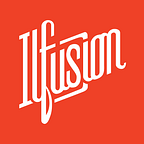5 Social Media Content Planning Tips for Beginners
One of the keys to a successful social media marketing strategy is a well-planned content calendar. Content planning not only helps in saving you time; it also ensures that the content you’re creating is aligned to the needs of your audiences and with the goals of your strategy.
A social media content calendar is basically an overview of the social media content you plan to post. It can be organized in any form that you feel comfortable with: an actual calendar, a Google Spreadsheet, or an interactive dashboard through a social media management app.
If you’re new to social media content planning or perhaps just need a refresher, here’s a primer to help you get started:
Elements to Include in Your Content Calendar
As was mentioned, there’s no definite template to a social media calendar; you can create it as you see fit. However, most content calendars usually include the following elements:
- Date and time when you plan to have the post go live; the time should be specific for each social media platform.
- Social media platform where you plan to publish the post
- Copy and creative assets for your post; the assets refer to the photos, videos, audio files, etc.
- Links and hashtags you plan to include in the post
Additional elements can also be included, such as a Notes column, UTM links, which task is assigned to whom, which locations to geotag, whether it will be boosted as a paid ad, etc.
Depending on your strategy as well, you can have different calendars for each platform, or you can also opt to have it integrated into one single calendar.
How to Plan Your Social Media Content Calendar
1. Determine your goals and your target audience
This is, by far, the most essential step. Establishing your social media marketing (SMM) goals will help you fine-tune your strategy and determine your key performance metrics.
Additionally, knowing who your target audience is will help you determine which social media platforms to post. While it may be preferable for your brand to be present on all popular platforms, doing so may not be time-efficient — stick to the platforms where your target audience is more likely to hang out.
2. Establish a workflow
A well-documented workflow keeps everything organized and keeps everyone on the same page. Some of the things you need to consider when establishing your social media content planning workflow:
- Who is part of your team? For example, your social media manager, community manager, copywriter and editor, designers, video creators, and the person who will approve the posts.
- How often are you going to post for each platform? Determine the days of the week and times of the day as well.
- How often will you be planning content? Will you be planning every week, once a month, or once every 2–3 months?
3. Document your social media and brand guidelines
Having a guideline on what to post and what not to post on your brand’s social media can make content creation easier. Some would include this in their brand style guide but you can also create a separate document that’s specific to your social media strategy. A few things you can include:
- Editorial rules: Determine your brand’s tone of voice, a list of words you prefer to use and/or avoid, your audience’s knowledge level, etc.
- Visual style guide: Again, this goes hand in hand with your brand style guide. In the context of social media, set some rules on the content’s format for each platform (e.g., where to put the logo), the imagery, illustrations, etc.
4. Have templates ready
Once you’ve worked out your workflow and determined your guidelines, prepare templates for each of the social media platforms you will publish to. You can also have a list of hashtags ready and boilerplate copies for specific posts (but be sure to customize for certain platforms when needed).
5. Have a library of all your assets
These are often called content repositories, digital asset banks, or a media resource database. Having a repository of content you can use and repurpose makes it easier for you to create more content, as well as saving you time and resources.
Your asset library can be organized in your company’s internal network, Google Drive, DropBox, etc. Find a content management platform that works best for you. The key things here are:
- Your library should be properly organized: Have different folders for content that has been used, content that hasn’t been used yet, content you can repurpose, etc. You can also organize them by date.
- It’s easily shareable within your team: This makes collaboration easier.
- It should be spacious and secure enough: Consider the overall storage capacity of the platform; it should be spacious enough for large files. Be sure to check the privacy policies and the security features as well.
There’s a lot involved in social media marketing, and planning and creating content is among the most tedious of all tasks. However, with the right strategy, a solid team, and time management, it can all be done smoothly.
Looking for more tips on social media marketing and content creation? Head on to our blog at https://www.ilfusion.com/blog.
